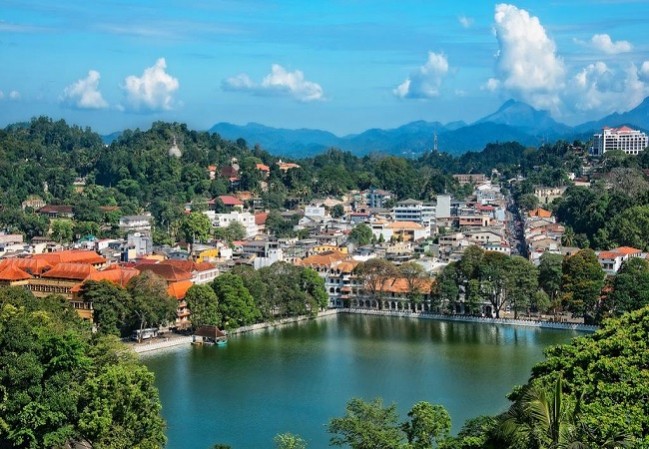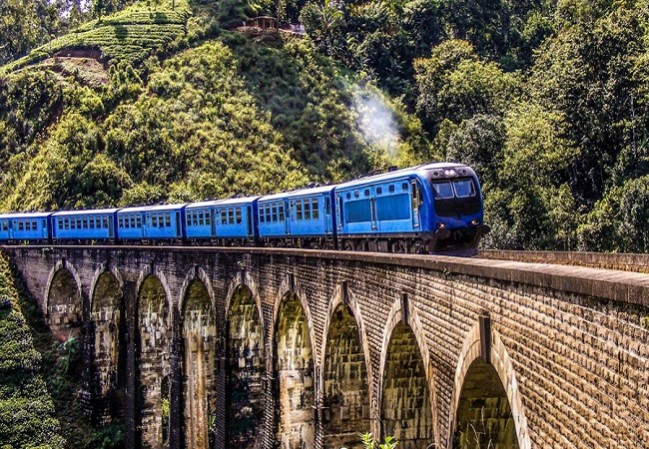3 nights 4 days Sri Lanka Leisure Tour
ITINERARY
Day 01: Arrival / Proceed to Kandy/ En route visit Pinnawala Elephant Orphanage/ Visit Kandy Temple/ Visit Peradeniya Botanical Garden/ Gem Gallery visit/ Kandy Cultural Show/ Overnight stay at Kandy .
PINNAWALA ELEPHANT ORPHANAGE (The excursion will take approx: 1 & 1/2 hrs)App. 55 miles from Colombo, off the Colombo - Kandy road is Pinnawala, where an orphanage was started in 1975 to house the abandoned and the wounded elephants. The number of elephants has increased to more than 65 now, including Baby Elephants brought from various parts, as well as some of the more than 25 babies born as a result of the captive breeding programme. The best time to visit is the feeding time from 0930-1000 hrs and 1330-1400 hrs and the bathing time from
1000-1030 hrs and 1400-1430 hrs when all the elephants are taken to the river close by.
KANDY : The excursion will take approx: 1 & 1/2 Hrs including 45 minutes cultural dance performance)The hill capital is another “World Heritage Site”. It was the last stronghold of the Sinhalese Kings during the Portuguese, Dutch and British rule and finally ceded to the British in 1815 after an agreement. To the Buddhists of Sri Lanka and the World, Kandy is one of the most sacred sites as it is the home of the “Dalada Maligawa” - Temple of the Sacred Tooth Relic of Lord Buddha. Close by are the remains of the Royal Palace (“Maha Wasala”), “Palle Wasala”- where the Queens stayed- now used for the National Museum, “Meda Wasala” where other close relatives lived, Audience Hall, Natha Devala and Vishnu Devala are situated close by. The Bathing Pavilion (“Ulpenge”) is by the Lake and in the Center of the lake is the Island called “Kiri samudraya” (Milk white ocean) used by the kings as the summerhouse. Today it is the center of Buddhism, Arts, Crafts, Dancing, Music and Culture. Visitors can see these Dance & Music at the daily Cultural Performances held at several places in the city.(
as per your preference.
Breakfast at the hotel/ Proceed to Nuwara Eliya/ En route visit Hanumanji Temple/ Witness Ramboda Falls/ Tea Plantation visit/ visit Seetha Amman Temple/ visit Seetha Amman Temple/ Visit Hakgala Botanical Garden/ Visit Gregory Lake/ Overnight stay at Nuwara Eliya
TEA PRODUCTION IN SRI LANKA: (The excursion will take approx: 30 minutes)Formerly Ceylon, is of high importance to the Sri Lankan economy and the world market. The country is the world's fourth largest producer of tea and the industry is one of the country's main sources of foreign exchange and a significant source of income for laborers, with tea accounting for 15% of the GDP, generating roughly $700 million annually. In 1995, Sri Lanka was the world's leading exporter of tea, (rather than producer) with 23% of the total world export, but it has since been surpassed by Kenya. The tea sector employs, directly or indirectly over 1 million people in Sri Lanka and in 1995 directly employed 215,338 on tea plantations and estates. The humidity, cool temperatures, and rainfall in the country's central highlands provide a climate that favors the production of high quality tea. The industry was introduced to the country in 1867 by James Taylor, the British planter who arrived in 1852.
NUWARA ELIYA: (The city tour will take approx: 1-2 hrs)The ‘Little England’ of Sri Lanka, is set against beautiful backdrops of Mountains, Valleys, Waterfalls and Tea Plantations. It is supposed to be one of the coolest places in the Island, but it is really just like an English spring day, although the temperature does drop at night. All around Nuwara Eliya you will see evidence of the British influence, houses like country cottages or Queen Ann style mansions. The Victoria Park, in the middle of the town, is a lovely place for a stroll or a picnic and is also good for Birding as you get some rare birds in this Park. Seasons may be absent elsewhere in Sri Lanka, but here you can read them by the flowers, which bloom in the spring (March to May) and the fall (August and September). These are the “seasons” when low- country folk flock to Nuwara Eliya to escape the sea level heat and humidity.
Breakfast at the hotel/ Proceed to Colombo/ Visit Gangarama Floating Temple/ Colombo City Tour + Shopping Tour / Overnight stay at Colombo. COLOMBO (The city tour will take approx: 2-3 hrs)Colombo is the business and commercial center and the new capital is Sri Jayawardhanapura Kotte, only a few miles away. Colombo was only a small seaport, which came into prominence in the 16th Century with the arrival of the Portuguese in 1505 and the development of it as a major Harbor took place during the British period. Colombo became the capital of Sri Lanka in 1815 after Kandyan Kingdom was ceded to the British. The remains of the buildings during the period of the Portuguese, Dutch and British rule are found in every area of the city. None of the Portuguese & Dutch fortifications are found today but some of their buildings and churches could be seen in the Fort & Pettah areas. Visit Fort, the former British administrative?center and military garrison, Sea Street - the Goldsmith’s quarters in the heart of Pettah, the Bazaar area where there is also a Hindu Temple with elaborate stone carvings, the Kayman’s Gate with the Belfry at the original gate to enter the Fort, the Dutch Church of Wolfendhaal dating back to 1749, Kelaniya Buddhist Temple dating to 6th C.B.C., Davatagaha Mosque, Colombo Museum and the Natural History Museum are some of the sites to be visited. Also visit the BMICH (Bandaranaike Memorial International Conference Hall), see the replica of Avukana Buddha in front and the Independence Memorial.
Breakfast at the hotel/ Proceed to the airport for the departure.





